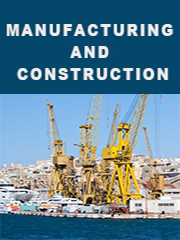The global Controlled Atmosphere Furnaces market was valued at US$ 410.1 million in 2022 and is projected to reach US$ 558.1 million by 2029, at a CAGR of 4.5% during the forecast period. The influence of COVID-19 and the Russia-Ukraine War were considered while estimating market sizes.
Controlled atmosphere furnaces have a high percentage of nitrogen, argon, hydrogen, & helium (flushing) and almost no oxygen (inert), or a gas mixture or vacuum to achieve the desired product finish. The oxygen will need to be accurately measured, whilst the nitrogen is controlled and regulated to ensure the correct atmosphere is maintained and running costs are kept to a minimum. Controlled atmosphere furnaces are used in applications such as the manufacturing of metal products, where a specialised environment is required within the ovens and furnaces to achieve the desired product finish.
This report aims to provide a comprehensive presentation of the global market for Controlled Atmosphere Furnaces, with both quantitative and qualitative analysis, to help readers develop business/growth strategies, assess the market competitive situation, analyze their position in the current marketplace, and make informed business decisions regarding Controlled Atmosphere Furnaces. This report contains market size and forecasts of Controlled Atmosphere Furnaces in global, including the following market information:
- Global Controlled Atmosphere Furnaces Market Revenue, 2018-2023, 2024-2029, ($ millions)
- Global Controlled Atmosphere Furnaces Market Sales, 2018-2023, 2024-2029, (Units)
- Global top five Controlled Atmosphere Furnaces companies in 2022 (%)
The top 5 players accounted for 48.11% of the global controlled atmosphere furnaces revenue market share in 2019.
We surveyed the Controlled Atmosphere Furnaces manufacturers, suppliers, distributors and industry experts on this industry, involving the sales, revenue, demand, price change, product type, recent development and plan, industry trends, drivers, challenges, obstacles, and potential risks.
Total Market by Segment:
Global Controlled Atmosphere Furnaces Market, by Type, 2018-2023, 2024-2029 ($ Millions) & (Units)
Global Controlled Atmosphere Furnaces Market Segment Percentages, by Type, 2022 (%)
- Horizontal Type
- Vertical Type
Global Controlled Atmosphere Furnaces Market, by Application, 2018-2023, 2024-2029 ($ Millions) & (Units)
Global Controlled Atmosphere Furnaces Market Segment Percentages, by Application, 2022 (%)
- Laboratory
- Metallurgical Industry
- Automotive Industry
- General Manufacturing
- Others
Global Controlled Atmosphere Furnaces Market, By Region and Country, 2018-2023, 2024-2029 ($ Millions) & (Units)
Global Controlled Atmosphere Furnaces Market Segment Percentages, By Region and Country, 2022 (%)
- North America
- US
- Canada
- Mexico
- Europe
- Germany
- France
- U.K.
- Italy
- Russia
- Nordic Countries
- Benelux
- Rest of Europe
- Asia
- China
- Japan
- South Korea
- Southeast Asia
- India
- Rest of Asia
- South America
- Brazil
- Argentina
- Rest of South America
- Middle East & Africa
- Turkey
- Israel
- Saudi Arabia
- UAE
- Rest of Middle East & Africa
Competitor Analysis
The report also provides analysis of leading market participants including:
- Key companies Controlled Atmosphere Furnaces revenues in global market, 2018-2023 (Estimated), ($ millions)
- Key companies Controlled Atmosphere Furnaces revenues share in global market, 2022 (%)
- Key companies Controlled Atmosphere Furnaces sales in global market, 2018-2023 (Estimated), (Units)
- Key companies Controlled Atmosphere Furnaces sales share in global market, 2022 (%)
Key players include:
- Ipsen
- DOWA Thermotech
- SCHMID
- KANTO YAKIN KOGYO
- Aichelin Heat Treatment System
- IVA Schmetz
- Fengdong
- TLON Technical Furnaces
- Shichuang
- BTU
- Abbott Furnace
- CARBOLITE GERO
- Centorr Vacuum
- MRF
- Jiangsu KingkindIndustrial Furnace
- Zhengzhou Brother Furnace
Outline of Major Chapters:
- Chapter 1: Introduces the definition of Controlled Atmosphere Furnaces, market overview.
- Chapter 2: Global Controlled Atmosphere Furnaces market size in revenue and volume.
- Chapter 3: Detailed analysis of Controlled Atmosphere Furnaces manufacturers competitive landscape, price, sales and revenue market share, latest development plan, merger, and acquisition information, etc.
- Chapter 4: Provides the analysis of various market segments by type, covering the market size and development potential of each market segment, to help readers find the blue ocean market in different market segments.
- Chapter 5: Provides the analysis of various market segments by application, covering the market size and development potential of each market segment, to help readers find the blue ocean market in different downstream markets.
- Chapter 6: Sales of Controlled Atmosphere Furnaces in regional level and country level. It provides a quantitative analysis of the market size and development potential of each region and its main countries and introduces the market development, future development prospects, market space of each country in the world.
- Chapter 7: Provides profiles of key players, introducing the basic situation of the main companies in the market in detail, including product sales, revenue, price, gross margin, product introduction, recent development, etc.
- Chapter 8: Global Controlled Atmosphere Furnaces capacity by region & country.
- Chapter 9: Introduces the market dynamics, latest developments of the market, the driving factors and restrictive factors of the market, the challenges and risks faced by manufacturers in the industry, and the analysis of relevant policies in the industry.
- Chapter 10: Analysis of industrial chain, including the upstream and downstream of the industry.
- Chapter 11: The main points and conclusions of the report.
